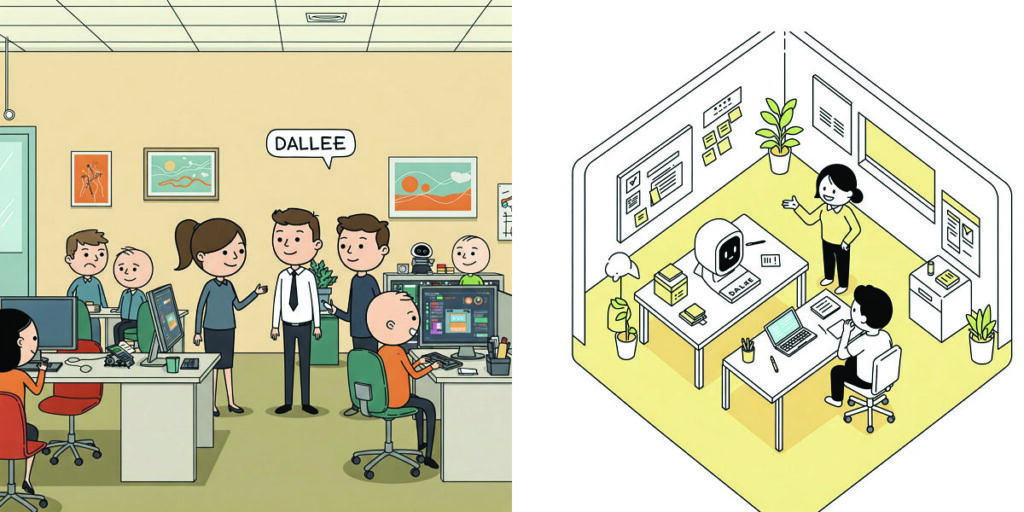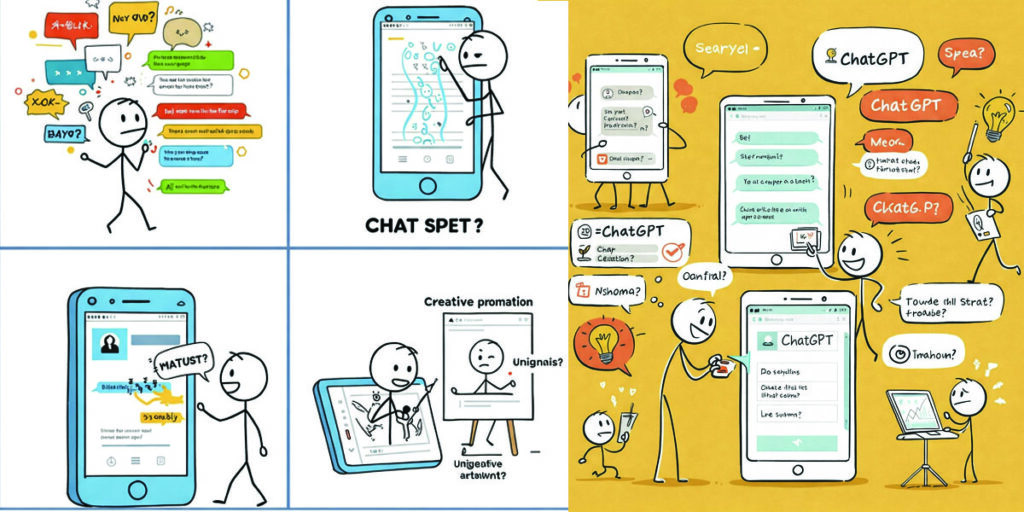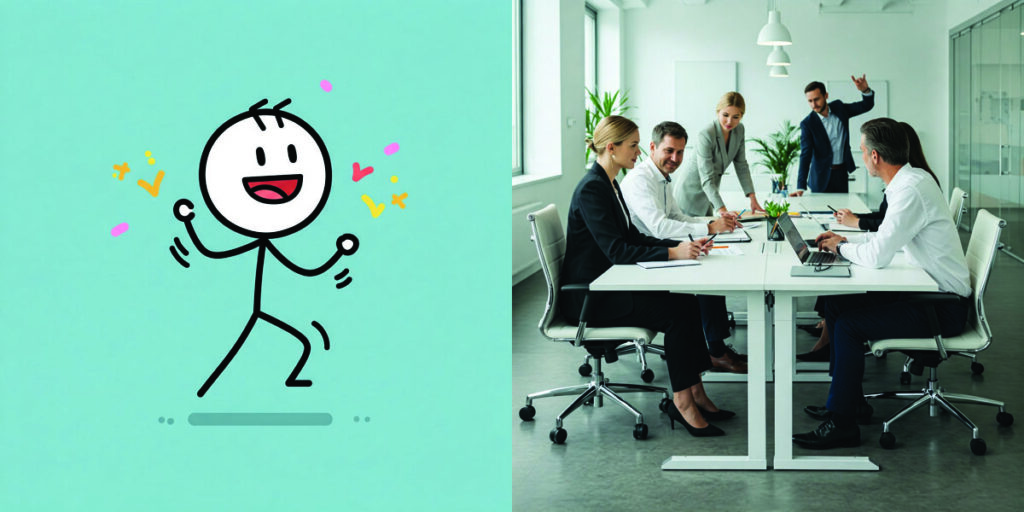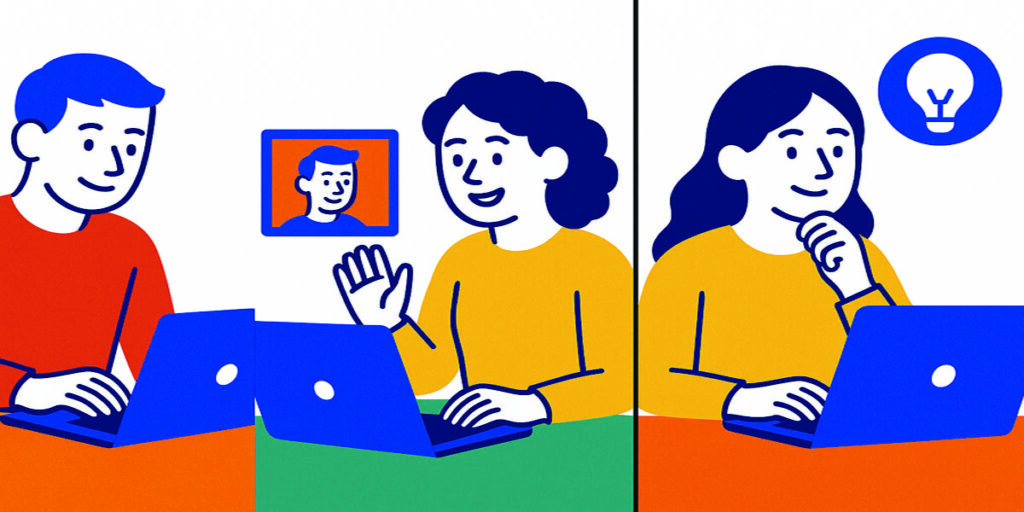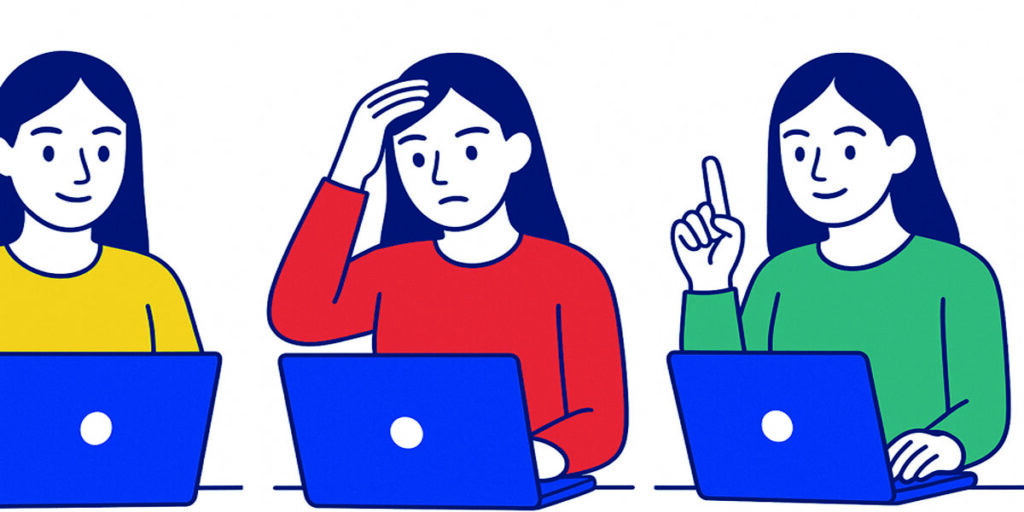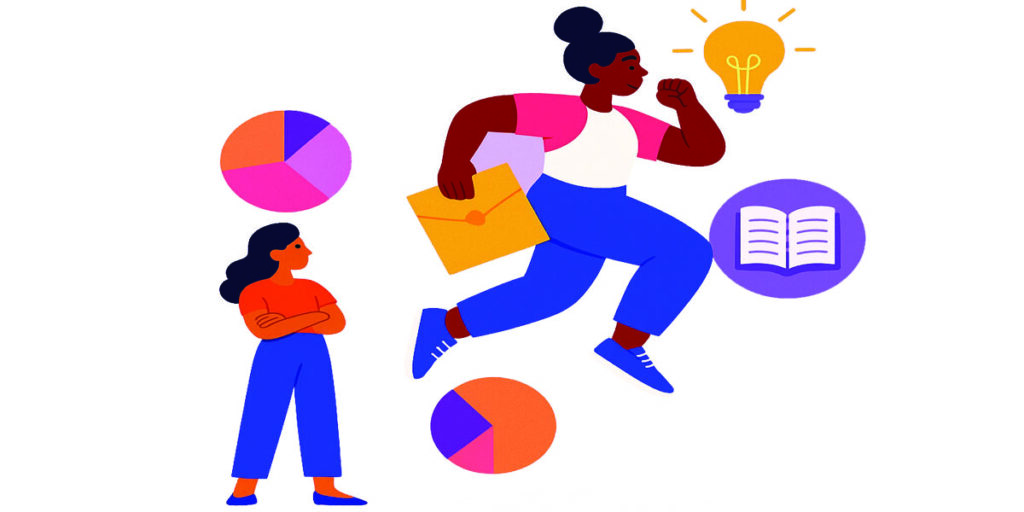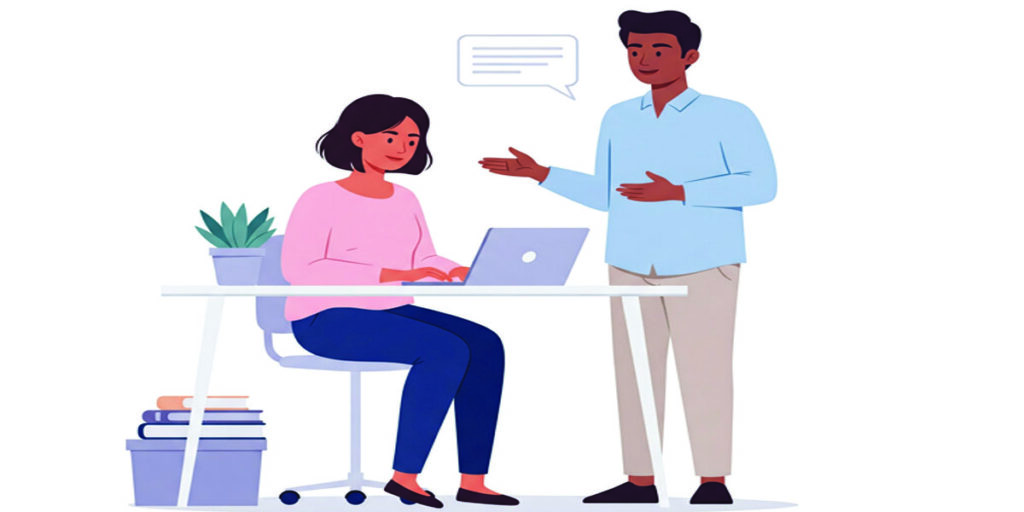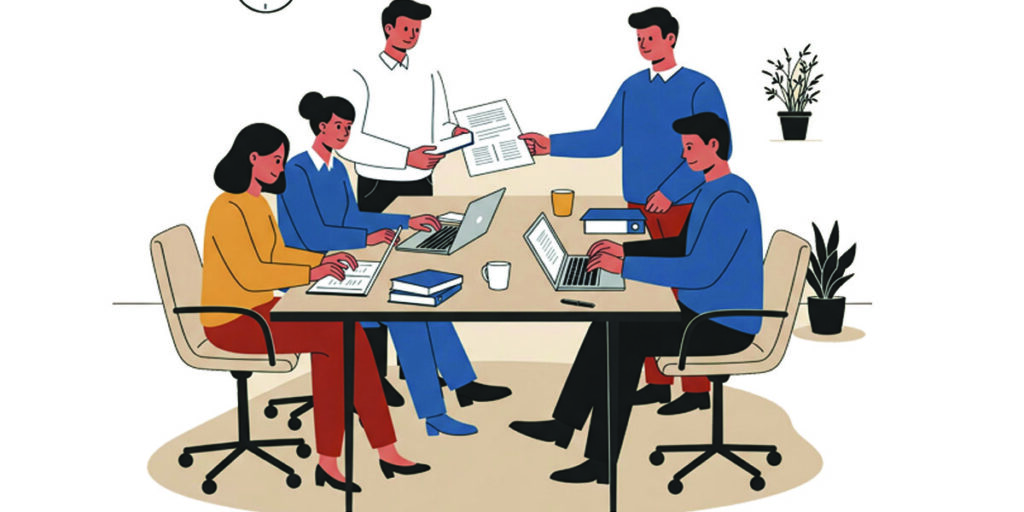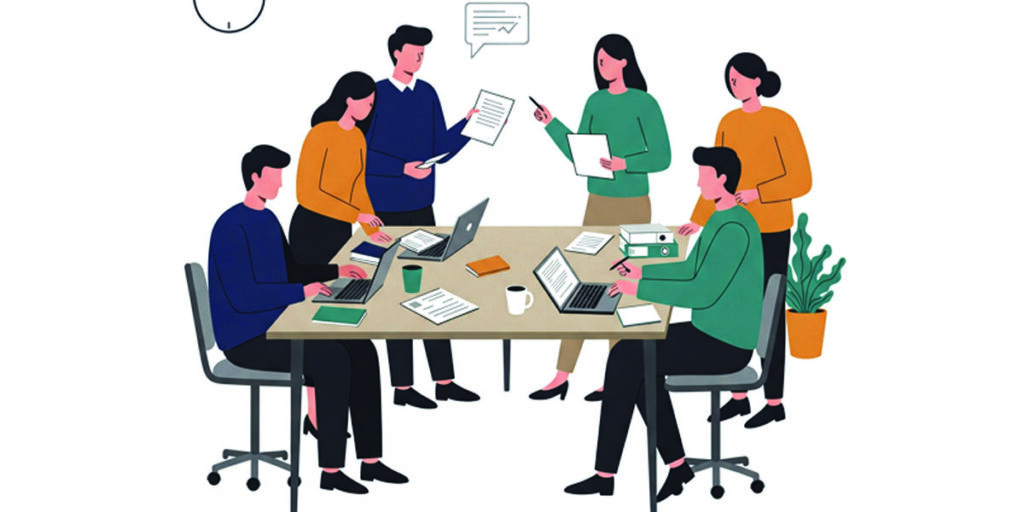It sounds like you’re interested in an article that captures the imaginative and often surprising nature of DALL·E, the way it weaves visual stories from simple text. Here’s an attempt to paint that picture with words:
The Whispering Canvas: Where Words Take Flight
Imagine a blank canvas, not stark white, but shimmering with latent possibilities. Now, whisper a phrase into the digital ether. Not just any phrase, but one tinged with a touch of the unexpected, a dash of the whimsical. Perhaps: “A cat riding a bicycle through a field of sunflowers at sunset.”
In the space between your thought and the screen, something magical happens. It’s as if a thousand unseen hands, guided by an intelligence both vast and dreamlike, begin to interpret your words. They delve into a boundless library of images, textures, and styles, not just recalling them, but creatively understanding their essence.
And then, it appears. Not a photograph, not a stock illustration, but something entirely new. The cat, perhaps a fluffy Persian with an air of dignified nonchalance, is indeed perched upon a bicycle, its tiny paws somehow gripping the handlebars. The sunflowers tower around it, their golden faces bathed in the warm, fading light of a meticulously rendered sunset. There’s a certain feeling to the image, a narrative thread woven into the pixels that goes beyond a simple depiction.
This is the essence of DALL·E. It’s more than just an image generator; it’s a storyteller in visual form. It takes the raw clay of language and molds it into scenes that can be hilarious, surreal, poignant, or utterly bizarre. Ask it for “an astronaut riding a horse on Mars,” and you might receive a gritty, almost photographic depiction of a lone figure against the rusty Martian landscape, the horse’s breath misting in the thin atmosphere. Or, you might get a more fantastical interpretation, with the astronaut clad in a shimmering spacesuit and the horse sporting improbable, flowing鬃毛.
The beauty lies in this unpredictability, this creative leap that DALL·E takes. It doesn’t just regurgitate existing images; it synthesizes new realities based on the nuances of your prompt. Sometimes, the results are exactly as you envisioned, a perfect visual echo of your internal monologue. Other times, they are delightfully, wonderfully wrong, offering a perspective you hadn’t considered, sparking new ideas and a sense of playful wonder.
Think of it as a collaboration with a boundless, slightly eccentric artist who lives within the machine. You provide the initial spark, the seed of an idea, and DALL·E cultivates it, adding its own unique flair and visual vocabulary. It’s a conversation between human imagination and artificial intelligence, a dance between language and pixels that continues to push the boundaries of what’s possible.
The whispering canvas awaits your next prompt. What story will you tell it today? What new visual world will you conjure into existence? The possibilities, like the digital universe itself, feel gloriously, endlessly open.
Understanding the Core Concept: Text-to-Image Generation
At its heart, the process revolves around providing the AI with textual descriptions, or “prompts,” which it then interprets and translates into corresponding images. This isn’t a simple keyword search; the AI leverages complex machine learning models trained on vast datasets of images and their associated text captions. These models learn intricate relationships between words and visual concepts, enabling them to generate novel images that align with the user’s descriptions.
Key Elements of Effective Prompting: The Art of Guiding the AI
The quality and creativity of the generated images are heavily dependent on the clarity and detail of your prompts. Think of your prompt as instructions to a highly imaginative, albeit sometimes literal, artist. Here’s a breakdown of key elements to consider when crafting your prompts:
- Subject: Clearly identify the main object or character you want in the image. Be specific. Instead of “animal,” try “a fluffy Persian cat.” Instead of “vehicle,” consider “a vintage red convertible.”
- Action/Activity: Describe what the subject is doing. “A cat sitting on a rug” is different from “a cat chasing a laser pointer.” Be vivid with action verbs.
- Setting/Environment: Specify the location or background of the scene. “A cat on a rug in a cozy living room” provides more context than just “a cat on a rug.” Consider the time of day, weather, and overall atmosphere.
- Artistic Style (Optional but Highly Influential): This is where you can truly steer the visual outcome. You can request specific art movements (e.g., “in the style of Van Gogh,” “like a Picasso painting”), mediums (e.g., “as a watercolor painting,” “like a digital illustration,” “as a photorealistic image”), or even the style of a particular artist (though be mindful of ethical considerations related to mimicking living artists).
- Mood/Atmosphere: Use descriptive words to convey the desired emotional tone of the image. “A cat sitting on a rug in a cozy living room with a warm and inviting atmosphere” is more evocative than the basic description. Words like “serene,” “dramatic,” “whimsical,” “cyberpunk,” or “dreamlike” can significantly impact the result.
- Color Palette: Suggest the dominant colors or overall color scheme you envision. “A cat sitting on a rug in a cozy living room with warm, earthy tones” provides more direction than leaving it to chance.
- Lighting: Specify the type and direction of light. “A cat sitting on a rug in a cozy living room with soft, natural light streaming through a window” adds depth and realism. Consider terms like “golden hour,” “dramatic shadows,” or “ambient lighting.”
- Camera Angle/Perspective (If Applicable): If you have a specific viewpoint in mind, include it in your prompt. “A close-up of a cat’s face,” “a wide shot of a cityscape,” or “a bird’s-eye view of a park” can influence the composition.
- Level of Detail: Indicate how detailed you want the image to be. “A highly detailed portrait of a cat” will likely yield a different result than “a simple cartoon of a cat.”
- Number of Subjects (If Applicable): If your scene involves multiple elements, specify the quantity. “Three playful kittens chasing a ball of yarn.”
Iterative Prompting: Refining Your Vision
Generating the perfect image often involves a process of iteration. Your first prompt might not yield exactly what you had in mind, and that’s perfectly normal. The key is to analyze the results, identify what you like and dislike, and then refine your prompt accordingly.
- Adding Detail: If the initial image is too generic, try adding more specific details about the subject, setting, or style.
- Adjusting Style: If the artistic style isn’t quite right, experiment with different art movements, mediums, or descriptive terms.
- Modifying the Scene: If the composition or environment isn’t what you envisioned, try altering those aspects of your prompt.
- Experimenting with Negatives (Sometimes Available): Some advanced interfaces allow you to specify elements you don’t want in the image. For example, “a futuristic city, but without any flying cars.”
Navigating the User Interface (General Principles):
While the specific interface might vary slightly depending on the platform providing access to the AI image generator, the general workflow tends to follow these steps:
- Accessing the Platform: You’ll typically need to access the AI image generator through a website or application. This might involve creating an account or logging in.
- Locating the Prompt Input Field: There will be a designated area where you can type or paste your text prompt. This is usually a clear text box labeled something like “Enter your prompt,” “Describe the image you want to generate,” or similar.
- Entering Your Prompt: Carefully type your well-crafted prompt into the input field. Pay attention to spelling and grammar, as the AI interprets your text literally.
- Initiating Image Generation: Once you’re satisfied with your prompt, there will be a button or command to initiate the image generation process. This might be labeled “Generate,” “Create,” “Imagine,” or similar.
- Reviewing the Results: The AI will then process your prompt and generate one or more images based on its interpretation. These results will be displayed on the screen.
- Selecting and Downloading (If Desired): If you’re happy with one of the generated images, there will usually be an option to select it and download it to your device.
- Refining and Regenerating: If the initial results aren’t what you’re looking for, you can either:
- Edit your existing prompt: Modify the text to be more specific or to introduce new elements.
- Use a “regenerate” or “vary” function (if available): Some interfaces offer options to generate new variations of the previous result, often with slight alterations.
Advanced Prompting Techniques:
As you become more comfortable with the basics, you can explore more advanced prompting techniques to achieve more nuanced and creative results:
- Combining Concepts: Don’t be afraid to blend seemingly disparate ideas. “A steampunk robot barista serving coffee to a unicorn in a Victorian cafe” can lead to fascinating and unique visuals.
- Using Figurative Language (with Caution): While the AI is improving, it can sometimes struggle with highly abstract metaphors or similes. However, you can experiment with descriptive figurative language to add flavor. “A city that looks like a giant, sleeping dragon” might yield interesting results.
- Specifying Ratios and Sizes (If Available): Some interfaces allow you to specify the aspect ratio (e.g., 16:9, 1:1) or even the desired size of the output image.
- Utilizing Negative Prompts (If Available): As mentioned earlier, specifying what you don’t want can be as helpful as describing what you do want. For example, “a beautiful landscape, no people, no buildings.”
- Exploring Seed Values (If Available): Some advanced interfaces allow you to use a “seed” value, which essentially acts as a starting point for the image generation. Using the same seed with slightly different prompts can produce related variations.
Ethical Considerations and Responsible Use:
It’s crucial to be aware of the ethical implications and use these powerful tools responsibly:
- Copyright and Ownership: Understand the terms of service of the platform you are using regarding the ownership and usage rights of the generated images.
- Bias in AI Models: AI models are trained on vast datasets, and these datasets can contain biases. Be mindful that the generated images might reflect these biases.
- Misinformation and Deepfakes: Be aware of the potential for misuse in creating realistic but fabricated images. Use these tools ethically and avoid generating or sharing misleading content.
- Impact on Artists and Creators: Consider the potential impact of AI image generation on human artists and creators. Use these tools as a source of inspiration and creative exploration, rather than as a replacement for human artistry.
Examples of Prompts and Potential Outcomes:
To further illustrate the principles discussed, here are some example prompts and the kind of images they might generate:
- Prompt: “A majestic eagle soaring through a stormy sky at sunset, dramatic lighting.”
- Potential Outcome: An image of a powerful eagle with outstretched wings against a backdrop of dark, turbulent clouds illuminated by the vibrant colors of the setting sun.
- Prompt: “A whimsical robot tending a garden filled with glowing, alien plants, soft pastel colors.”
- Potential Outcome: A charming illustration of a robot carefully watering fantastical plants that emit a gentle light, rendered in a delicate and colorful style.
- Prompt: “A photorealistic close-up of a dewdrop on a spiderweb, intricate details, morning light.”
- Potential Outcome: A highly detailed image capturing the delicate structure of a spiderweb with a glistening water droplet, illuminated by the soft light of dawn.
- Prompt: “A surreal cityscape made of melting clocks and floating islands, in the style of Salvador Dali.”
- Potential Outcome: An image reminiscent of Dali’s work, featuring distorted timepieces and impossible landmasses suspended in a dreamlike space.
- Prompt: “A cute otter wearing a tiny top hat and monocle, sitting in a vintage armchair, cozy library setting.”
- Potential Outcome: A charming and slightly humorous image of an anthropomorphic otter dressed in formal attire, relaxing in a book-lined room.
Exploring Different Platforms and Models:
The field of AI image generation is rapidly evolving, and various platforms and underlying models offer different strengths and styles. Experimenting with different tools can broaden your creative horizons and help you discover which ones best suit your needs.
Unleashing Your Visual Imagination
Using AI image generators like DALL·E is an exciting journey into the realm of visual creation. By understanding the principles of effective prompting, engaging in iterative refinement, and being mindful of ethical considerations, you can harness the power of these tools to bring your wildest textual imaginings to life. Embrace the experimentation, enjoy the surprises, and let your words paint breathtaking pictures on the digital canvas. The more you practice and explore, the more adept you’ll become at guiding these intelligent artistic partners to realize your unique visual stories.
